French Polynesia
Photos
41 Photos
Per Page:
Filter Categories
All
Filters
The island of Tahiti, the largest in French Polynesia, is part of a volcanic chain formed by the northwestward movement of the Pacific Plate over a fixed hotspot. Tahiti consists of two old volcanoes - the larger Tahiti-Nui in the northwest and Tahiti-Iti in the southeast - linked by an isthmus. Image courtesy of NASA.
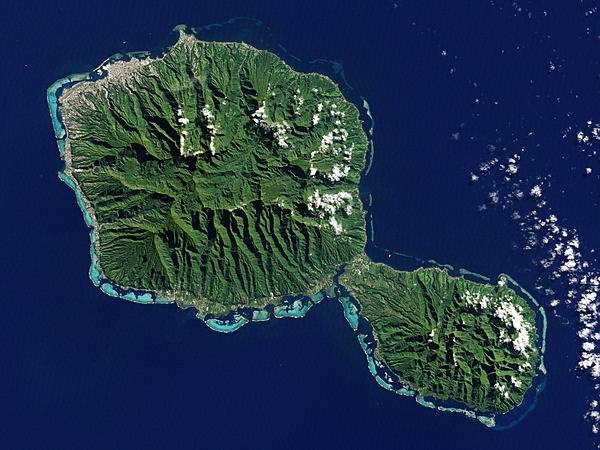
The islets that make up Tetiꞌaroa are located 53 km (33 mi) north of Tahiti and have a total surface area of 6 sq km (2 sq mi); they were once the vacation spot for Tahitian royalty. Image courtesy of NASA.
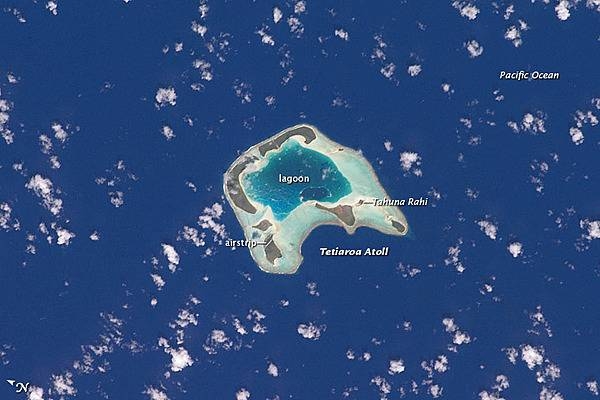
Considered by many as one of the natural wonders of the world, the island of Bora-Bora is a single island surrounded by an extensive coral reef and a beautiful blue lagoon captured in the center of this low-oblique photograph. The coral reef north of Bora-Bora is Tupai Atoll. The two islands southeast of Bora-Bora - Tahaa (northern island) and Raiatea (larger southern island) - are encircled by a single coral reef system. Image courtesy of NASA.
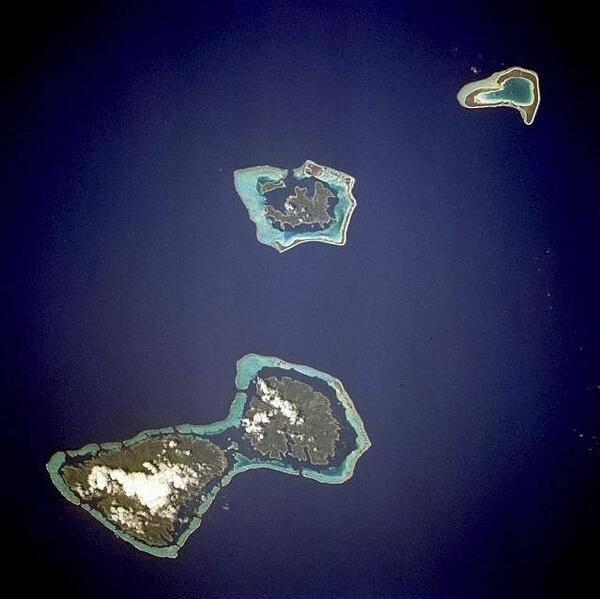
A direct overhead view of Bora Bora from the International Space Station. Image courtesy of NASA.
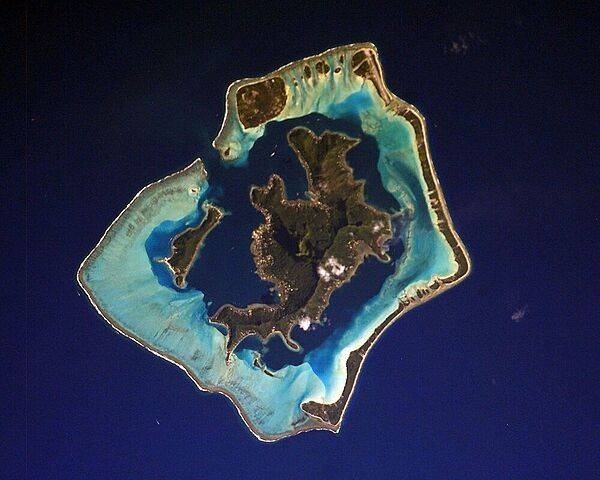
The islands of Taha’a and neighboring Raiatea to the immediate south are enclosed by the same coral reef; they may once have been a single island. Image courtesy of NASA.
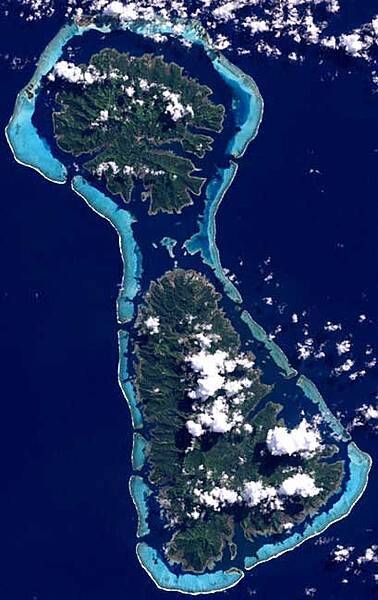
The tropical island of Moorea as viewed from the International Space Station. The barrier reefs surrounding the island create zones of shallow, tranquil light blue waters. Image courtesy of NASA.
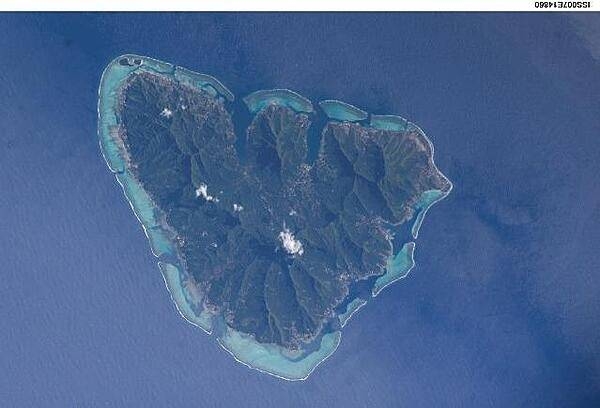
Located about 355 km (220 mi) northeast of Tahiti, Rangiroa Atoll in the Tuatomus is one of the largest atolls in the world. Image courtesy of NASA.
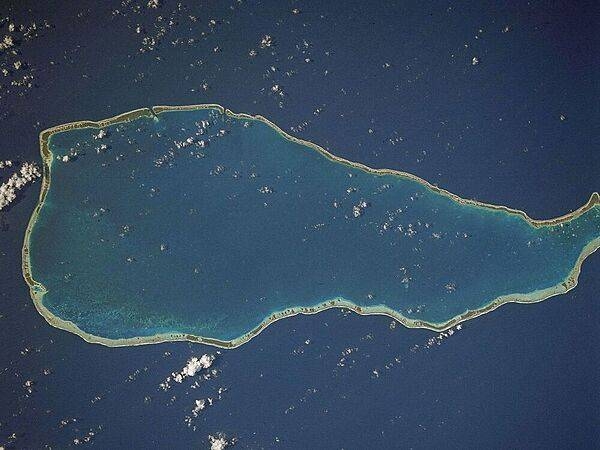
Mataiva Atoll is notable in that its central lagoon includes a network of ridges (white, image center) and small basins formed from eroded coral reefs. Mataiva means “nine eyes” in Tuamotuan, an allusion to nine narrow channels on the south-central portion of the island. The atoll is sparsely populated, with only a single village, Pahua, located on either side of the only pass providing constant connection between the shallow (light blue) water of the lagoon and the deeper (dark blue) adjacent Pacific Ocean. Much of the 10-km (6-mi)-long atoll is covered with forest (greenish brown). Vanilla and copra (dried coconut) are major exports from the atoll, but tourism is becoming a larger part of the economy. Image courtesy of NASA.

Heart-shaped Maupiti is a small coral atoll with a volcanic island in its midst; the total land area is about 11 sq km (4.2 sq mi). Image courtesy of NASA.
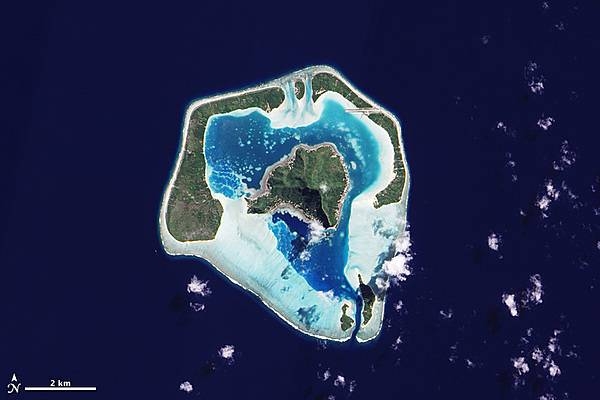
Hiva Oa Island in the Marquesas archipelago.
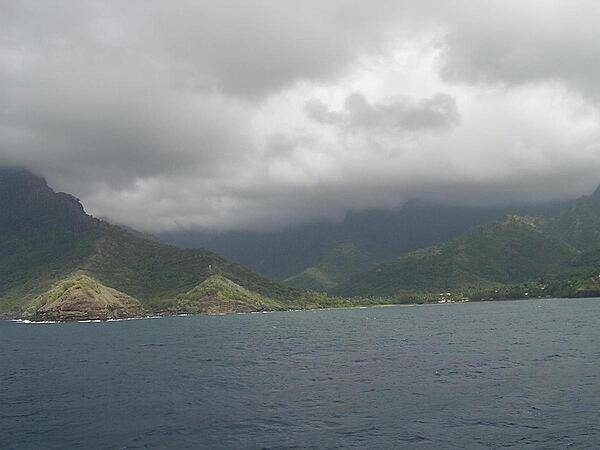
Nuku Hiva Island in the Marquesas archipelago.
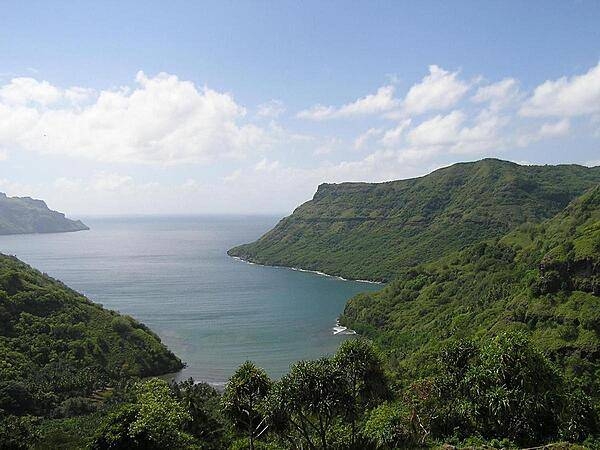
Stone tiki on Nuku Hiva Island in the Iles Marquesas archipelago.
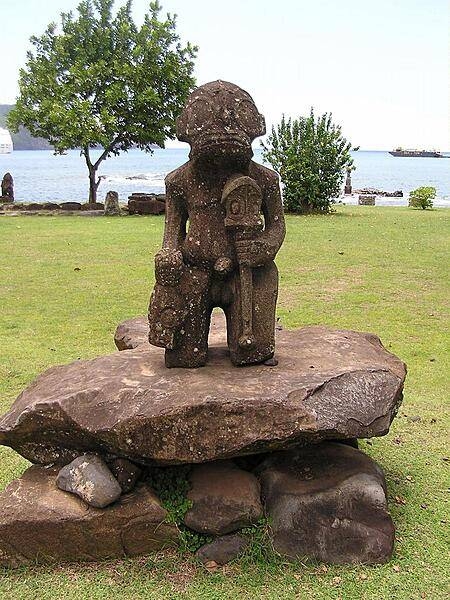
Page 01 of 04